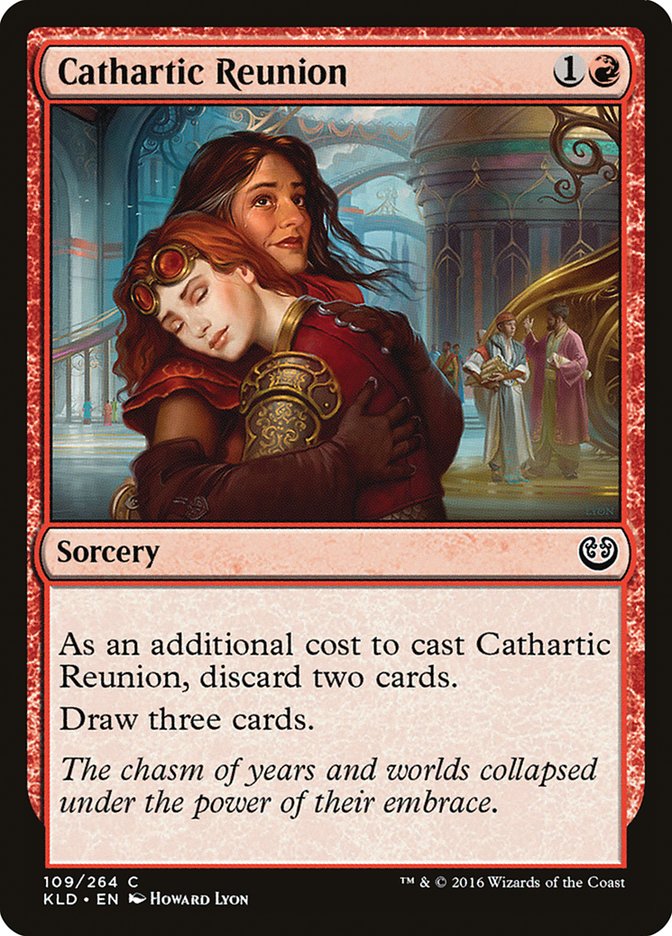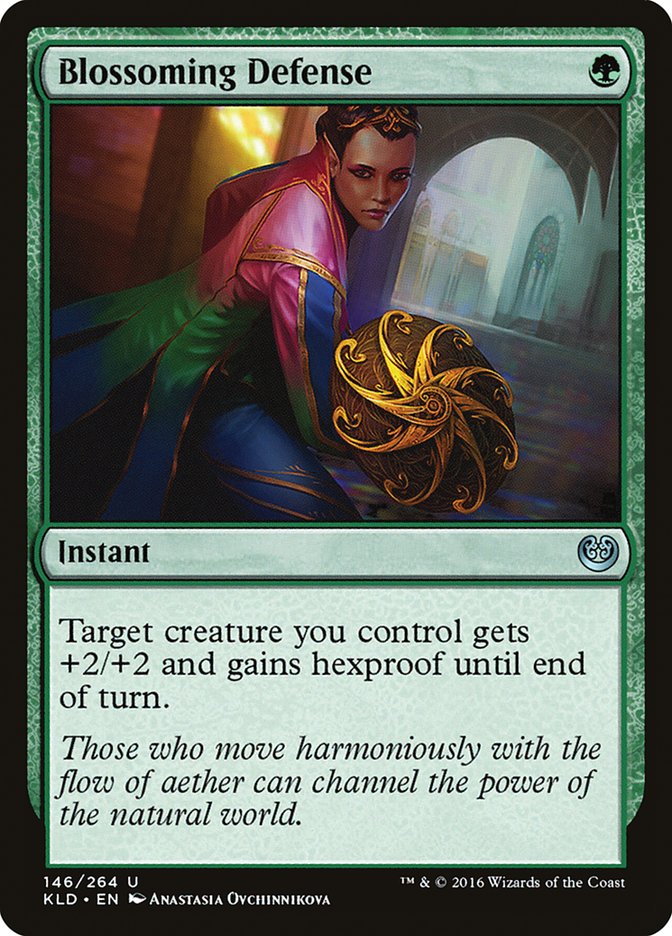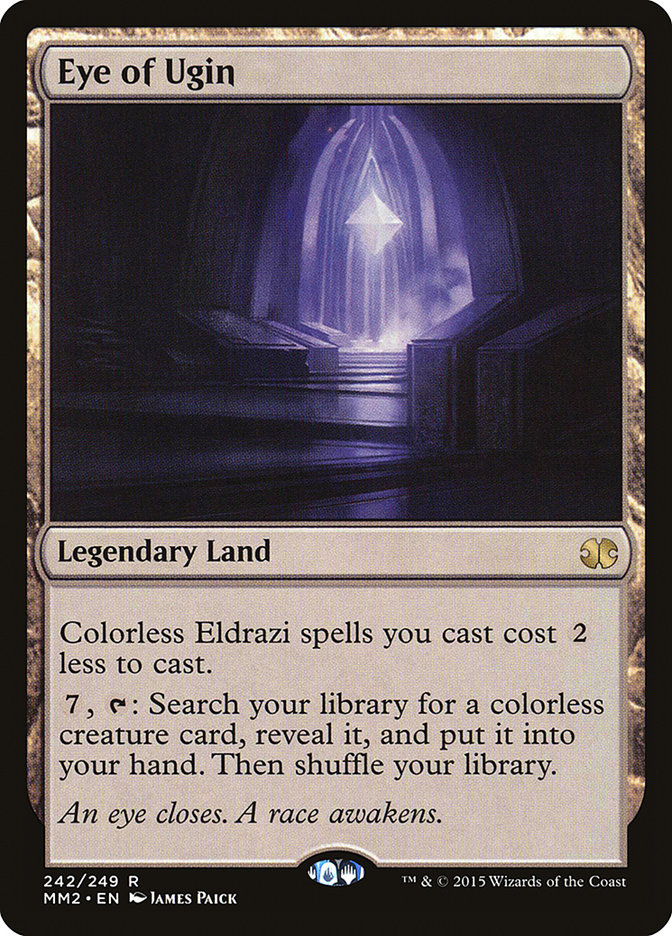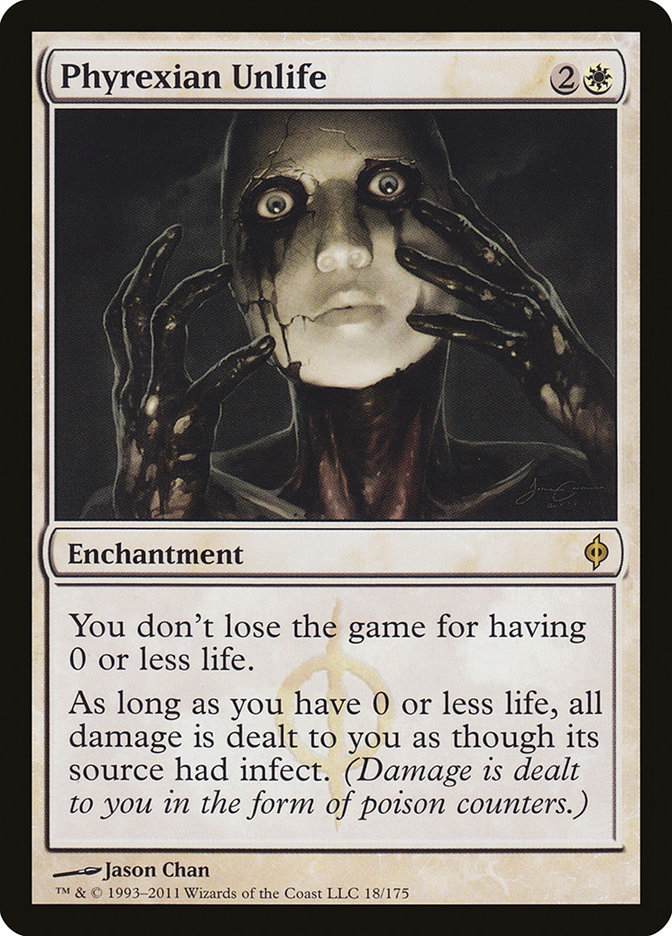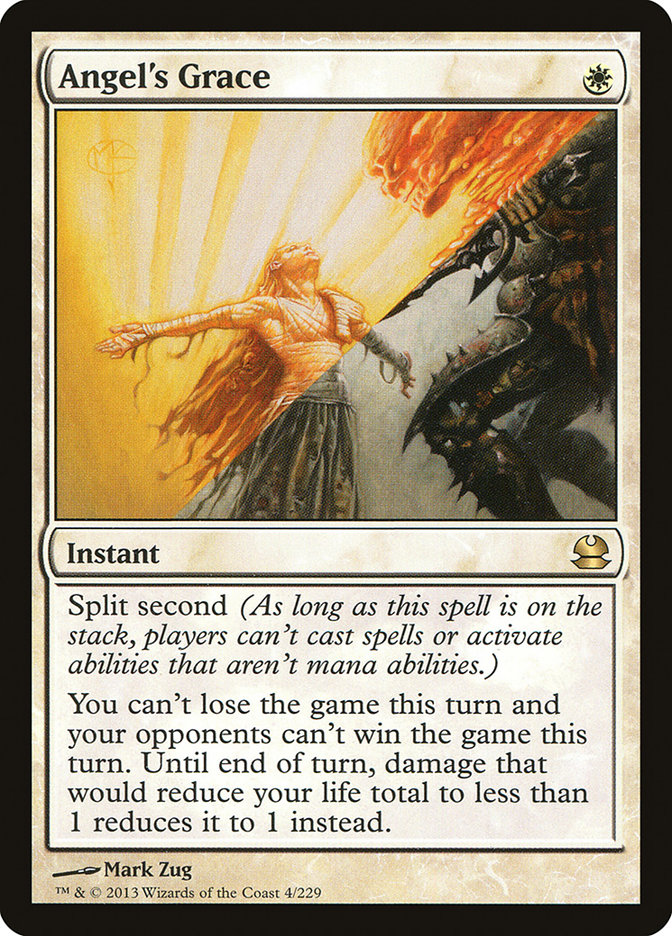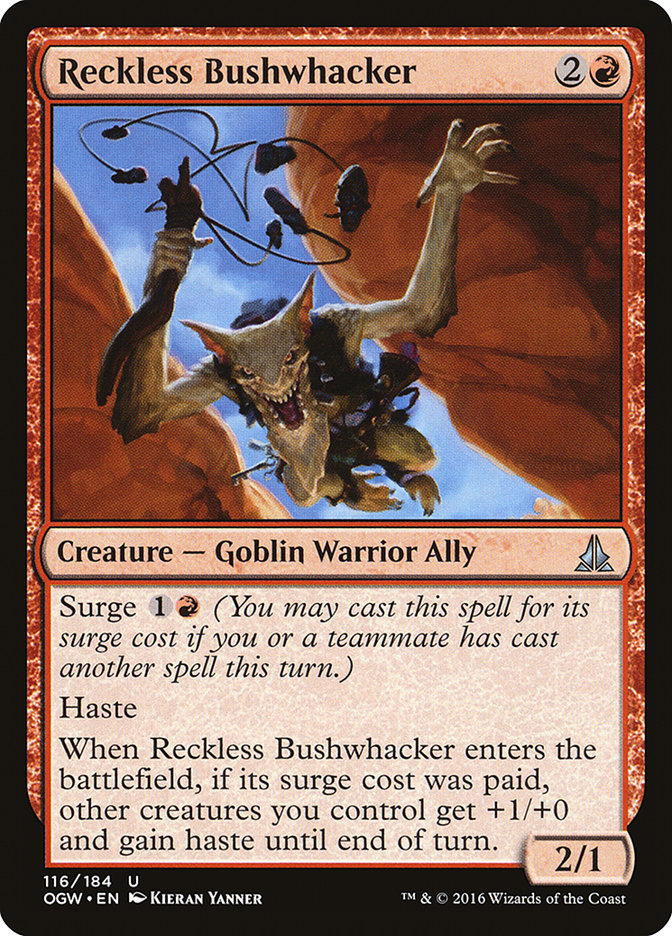Modern was already teetering on the edge.
Decks like Infect and Dredge presented incredibly fast kills that were difficult to interact with, and the general rule of the format has been “go fast or go home.” If you can’t present either lethal damage or an irreversible battlefield state by turn 4, you are frankly-hard pressed to be able to try to answer the wide array of what your opponents may be bringing to the table.
Some fair decks tried to fight the good fight with traditional disruptive elements, but Modern was already a “kill or be killed” world.
Enter Kaladesh.
If you thought the format was fast and combo-heavy before, you ain’t seen nothing yet.
It’s not often that new sets impact Modern in such a huge way, but Cathartic Reunion and Blossoming Defense give a shot in the arm to Dredge and Infect. Both decks were already on the verge of being too good in Modern, and it is quite odd that Wizards would print new cards that make them both even better.
Make no mistake: if you are not either playing Dredge or Infect in Modern right now, you damn well better make sure you can kill them before they kill you or interact in a unique way. Just throwing Grafdigger’s Cage or Darkblast into your Abzan sideboard is not going to cut it.
As a result, #SCGMKE was one of the most combo-dominated SCG Tour events in recent memory.
Lightning Bolt, once the crown jewel of Modern and almost always the most-played card in any Modern tournament, has fallen from grace. There were twelve copies of Lightning Bolt in the Top 16 of #SCGMKE.
Twelve!
With the exception of how it is used in Burn, Lightning Bolt is the baseline for a fair card in Modern. It is a cheap, efficient, non-linear card utilized by fair decks as powerful removal and reach. It hasn’t been uncommon for half of the top decks in a tournament to be playing full sets of Lightning Bolt, but right now Modern has no time for non-linear “good” cards. Modern is brutal and linear, with each deck looking to execute its plan as quickly and ruthlessly as possible.
As such, #SCGMKE was awash with Dredge and Infect decks.
After hanging up Jeskai Control a while back, I decided a few events ago that I was no longer interested in playing fair in Modern. At #SCGORL it was Infect, and at #SCGMKE it was time to try Dredge. I got in touch with Steve Mann for a list, who’s been crushing Magic Online for the last few weeks with the deck, and ended up here:
Creatures (24)
Lands (20)
Spells (16)

Frankly, this deck is completely busted.
I took four losses in #SCGMKE, losing the mirror twice and to mistakes on my end twice.
I highly doubt this deck will survive the next Banned and Restricted List announcement, and think it hasn’t seen widespread adoption mostly because of how slowly Modern tends to adapt and how expensive picking up a new Modern deck can be for the average player. The average Modern player typically buys one deck and then sticks with it despite the typical minor metagame shifts. This is great for most players because of how valuable it is to know your deck inside and out, and for the most part most Modern decks are viable when piloted well. This is also likely one of the reasons that Modern events are so popular— once you have your deck, you basically have a Modern deck for life. There’s no need to keep up with new cards like Standard.
Every once in a while, though, things get broken. We saw this during Eldrazi Winter, and these new Dredge lists have a similar feel in power level. Dredge is certainly a deck that can be hated out in ways Eldrazi decks could not, but the cost of so many sideboard slots in such a typically wide-open format is very damaging.
The other beneficiary of Kaladesh has been the already-dominant Infect.
Creatures (12)
Lands (20)
Spells (28)

Even before the printing of Blossoming Defense, Infect was a scourge on the Modern format.
There are only two things that keep Infect and its common turn 3 kills in check:
1. Midrange decks packed with discard and removal like Jund, Grixis, and Abzan.
2. How difficult it is to pilot the deck to its fullest potential.
It’s not uncommon to see an unknown player Top 8 with Scapeshift or Burn, but rather rare to see an Infect player win a tournament and not be named Andrew Jessup, Tom Ross, or Bradley Carpenter. The deck is exceptionally hard to play technically and greatly rewards players who are skilled in reading their opponents’ hands and willing to bluff properly.
Infect is also exceptional against other combo decks, as its quick clock backed up by mild disruption is a nightmare for decks like Scapeshift, Tron, and Ad Nauseam. While Infect did not crack the Top 8 of #SCGMKE, there were three copies in the Top 16. Burn was the third most-popular deck on Day 2, and while no Burn players did that well in the event, they likely took some of the Infect players down with them.
The Other Unfair Decks
Joining Dredge and Infect in the Top 16 of #SCGMKE were a number of other linear decks, either boasting a good matchup against one of the two or just trying to be broken in their own way.
Creatures (5)
Lands (21)
Spells (34)

Seeing that two most-played decks on Day 2 of #SCGMKE were Dredge and Burn, it’s not surprising that Samuel Jadin’s Ad Nauseam deck made it all the way to the finals. Ad Nauseam is a powerful but somewhat polarizing two-card combo deck that excels against other non-interactive decks and decks trying to do twenty damage.
Both Angel’s Grace and Phyrexian Unlife, typically used as combo pieces with Ad Nauseam, are excellent at prolonging a game against attackers. However effective they are against Dredge and Burn, though, they are equally worthless against Infect, as neither card actually does anything. Provided he could dodge Infect, Samuel’s metagame call was a fantastic one, and he got paid off with a near-miss in the finals.
Creatures (8)
Lands (27)
Spells (25)

Jeremy Jung’s Scapeshift deck fits a similar profile. The deck is also quite good against Dredge with maindeck Anger of the Gods and a difficult to interact with endgame. Scapeshift isn’t the fastest combo deck in the format, but it is just fast enough to give Dredge some serious problems if they have to worry about Anger of the Gods.
By the same token, however, Scapeshift really struggles with Infect. Scapeshift largely operates at sorcery speed and simply lacks the tools to interact with Infect on any axis that matters. Both Samuel and Jeremy have to thank the eleven Burn players that made Day 2 for helping to knock the Infect decks out of their bracket, leaving them with fairly cushy matchups.
Creatures (27)
- 4 Arcbound Ravager
- 4 Ornithopter
- 2 Master of Etherium
- 4 Steel Overseer
- 3 Memnite
- 2 Etched Champion
- 4 Signal Pest
- 4 Vault Skirge
Lands (17)
Spells (16)

Just when you think Affinity has gone away, you get attacked by a 7/1 Vault Scourge on turn 2.
Affinity is the same as it ever was and looks to get under all of the combo decks by producing its own broken openings with free spells and Mox Opal. Like Infect, Affinity is another deck that would struggle at times against removal-heavy decks like Jund and Grixis, and with all of the other combo decks pushing those decks out of the equation, it is allowed to rise once again. Sideboards also get stretched mighty thin by players trying to answer the many combo decks, which leads to a shortage of Stony Silences and Ancient Grudges.
The Fair Decks
There were three fair decks in the Top 8 at Milwaukee, although they weren’t like the fair decks we are used to seeing.
Creatures (29)
- 4 Noble Hierarch
- 2 Phantasmal Image
- 3 Geist of Saint Traft
- 4 Drogskol Captain
- 4 Rattlechains
- 4 Spell Queller
- 4 Selfless Spirit
- 4 Mausoleum Wanderer
Lands (22)
Spells (9)

Creatures (13)
Lands (24)
Spells (23)

When Lightning Bolt is kept at bay, Spell Queller will come out to play.
With Lightning Bolt out to lunch and linear combo decks running amok, Spell Queller is actually quietly one of the best creatures in the format. Dredge and Infect can hardly touch it, and even something like Affinity can falter when its key card is countered.
Neither deck impresses me all that much, but they are nothing if not a loud announcement that Spell Queller is an excellent solution to the linear combo wasteland Modern is on the verge of becoming. The ability to apply pressure while disrupting is crucial, and this will likely be only the beginning of Spell Queller’s coming-out party.
Creatures (30)
- 4 Kird Ape
- 4 Tarmogoyf
- 4 Wild Nacatl
- 4 Goblin Guide
- 4 Burning-Tree Emissary
- 4 Experiment One
- 2 Ghor-Clan Rampager
- 4 Reckless Bushwhacker
Lands (18)
Spells (12)

The last “fair” deck in the Top 8 walks the line between aggro and combo, much like Affinity does. Sure, it has Wild Nacatl, Kird Ape, and Lightning Bolt, and it looks like your typical aggressive deck, but that is not enough to make it in such a combo-oriented format.
Reckless Bushwhacker gives the deck a combo-esque feel and provides for a wide variety of possible turn 3 kills. This sort of explosiveness is necessary in such a fast and hostile format, and it’s not surprising to see Michael’s deck come out on top of all the other Burn decks.
Conclusions
Modern is in a brutal place right now.
Until someone figures out how to play fair and still beat the variety of combo decks or there’s some sort of banning, your best bet is just to crank it up to eleven and bomb away with your combo or aggro-combo deck of choice. Dredge is the best of the bunch, and learning how to play it and how to handle the mirror should be your top priority.
It’s not often we get to play a broken deck for that long in Modern, so you might as well enjoy mama’s embrace for as long as you can.
It’s not often a hug from mom can cause so much trouble!



